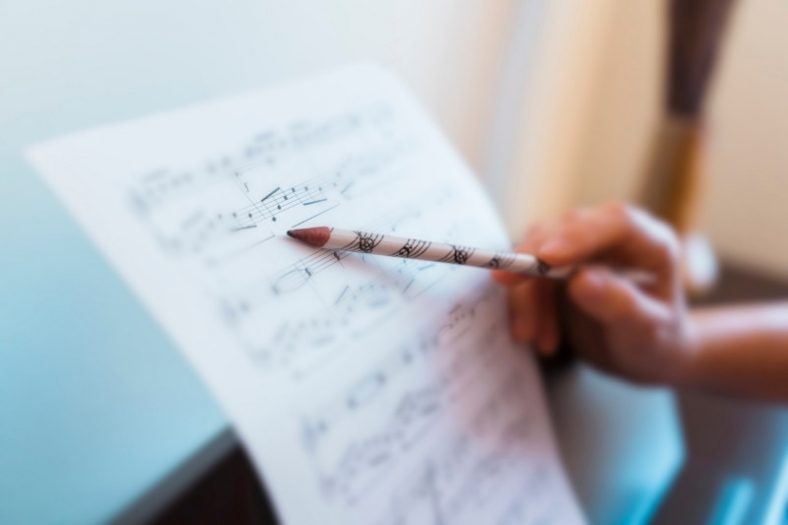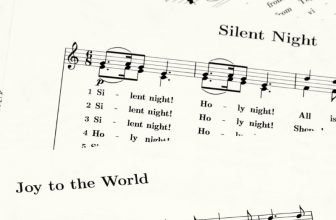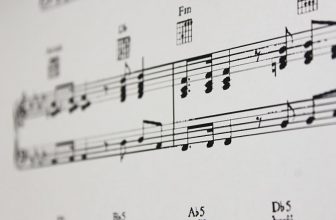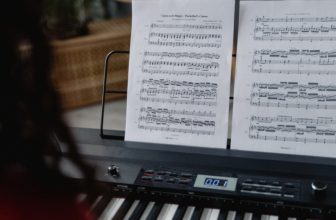Different Types of Musical form (Explained)

Musical form is the construction needed for composing, then the structure necessary for analyzing or interpreting a musical work. In other words, the skeleton of a musical plan for the composer, and a guiding map for the interpreter.
Musicians use alphabetic letters to label the musical sections, passages, pieces, and cycles:
A = the initial idea
B, C, D… = the alternate opposing elements
A¹, B² = the return of the first or another musical unit in variations
a, b, c,…= the subdivisions of each substantial unit
A’, A” = similar divisions with slight changes
Music is all about time and the timing of the sound. A passage, a movement, and a cycle are all happenings in time and are the names of organizational sections of a musical structure. These sections aim to put a series of musical tones correctly in time.
A series of organized musical tones reveal the fundamental concepts. First, you compose a melody with repeated, contrasting, or varying phrases. Next, these phrases must be connected to produce a complete musical form. This series of musical tones includes components or structural units. The most important is the phrase that corresponds to what you perform with the proper toning.
Sectional groupings connect the musical phrases to one same idea. Not every phrase lasts the same. Connecting music and language breaks up extensive groupings into periods, sentences, and paragraphs. To make a melody, two or more phrases are put together, and this melody may be part of an even broader composition. Besides, “theme” refers to a melodic element within a musical composition.
Using short elements such as a motif or figure can help make a piece sound more like a whole. For example, in music, when two or more beats of the same rhythm are combined, they can make a motif or figure.
Contents
- How Many Types of Musical Form Are There?
- The Iterative Type
- The Reverting Type
- binary form
- 1. Simple Binary Form
- 2. Rounded Binary Form
- Ternary Form
- 1. Simple Ternary Form
- 2. Compound Ternary Form
- 1. Rondeau (Baroque)
- 2. Five-Part Rondo
- 3. Seven-Part Asymmetrical Rondo
- 4. Seven-Part Symmetrical Rondo
- The Strophic Type
- The Progressive Type
- What is the importance of musical form?
- Summary
How Many Types of Musical Form Are There?
There are four essential types of musical forms:
The Iterative Type
The iterative type makes us hear the primary melodic line in repetition. Although you can find it mostly in Gregorian chant, the iterative type forms might be the initial models of today’s musical forms as the reverting type forms;
the French Ballade‘s pattern is ‘a a b, or ab ab c’
the Italian Ballade‘s pattern is ‘A b b a A’
Virelai, the French vocal music’s pattern is ‘A b b a A b b a A’
Rondeau is following the pattern ‘A B a A a b A B’,
and the German Bar Form‘s pattern is ‘a a b’
The Reverting Type
The reverting type again makes us hear a repeated primary phrase, but this time, the repetition comes after a contrasting phrase. The reverting type forms are:
binary form
The binary (two-part) form is a musical composition divided into A and B sections. The critical point about the difference between these sections is that there is some form of contrast. That is to say; section A is different from section B. Usually, this contrast is to do with a key change. In other words, if A will be in one key, B will be in another key. Besides, there might be other changes as well, such as a different melodic or harmonic material. In any case, there is some form of contrast between the A section and the B section.
There are two types of Binary Forms:
1. Simple Binary Form
The simple binary form that includes two sections called A and B became popular in the Baroque period between 1600 to 1750.
Ex. A :||: B :||
When the A section is in a Major key, the B section comes in the Dominant key. If A section is in C Major, for example, B section will be moved to G Major as it is the dominant key of C Major.
Ex. A in C Major :||: B in G Major :||
Section A may be in a minor key as well. In this case, Section A moves into Section B in relative Major key. If Section A is in A minor, we move into Section B in C Major as it is the relative Major key of the A minor.
Ex. A in A minor :||: B in C Major :||
A subtype of the simple binary form called parallel binary has similar thematic content in the first and the second sections. The second section has a very different harmonic structure, it might rework the motives that were first introduced in the first A section.
Ex. A :||: A’ :||
Hence, the second Section A’ shows us that there’s been some alteration compared to Section A.
2. Rounded Binary Form
This type of binary form became famous later on in the next period the Classical Period between 1750 to 1820. The rounded binary form gained prominence in the late 18th century when composers developed and refined it into the sonata form. The sonata form has the same structure as the sonata-allegro or first movement form. The only difference is their names.
There are still two sections called Section A and Section B in the rounded binary form, but this time, there is a double return of the opening theme at the opening pitch level. Section A, which starts in tonic at the beginning of the binary form, will return in the second section. The opening theme will come back, and it will come back in the same key. That return of the tonic key at the exact moment of the melodic reprise is significant to compose a rounded binary form.
Ex. A :||: B A :||
You can see how the rounded binary form is a development of the simple one, and it’s close to the ternary form because it’s almost A B A but still not exactly.
If you are going to compose in a binary form, you need a clear A B structure with some contrast between the two. Ideally, you can put that contrast with the key change either to the dominant or the relative minor.
Ternary Form
The ternary (three-part) form, A B A or modified A B A’ is another reverting type. It’s commonly called “song form” due to its widespread use in that genre and piano pieces.
An exact return to the original A may be written out or may use a da capo. The term da capo originates from the da capo aria, which was the most common form in late Baroque opera.
In this type of aria, the composer doesn’t make the final statement of Section A. Instead, the performers follow the written instruction “da capo,” which means “from the beginning,” and repeat the first part. Minuet and scherzo with trio have da capo in them, too.
There are two types of Ternary Form when we consider the groupings of the sections:
1. Simple Ternary Form
The basic ternary form includes three portions named A B A. Unlike the rounded binary, the ternary lacks repetition signs. The rounded binary combines the B and final A sections into one chunk based on the repetition scheme. But, the simple ternary has evenly proportioned A B and A sections.
Ex. A B A
or modified A B A’
The characteristics of the B sections are the second distinction between the rounded binary and simple ternary. In rounded binary, section B is usually seen as a mini-development. It will be fragmented, with some prominent extension, especially as it approaches the return of the A material and the tonic key. In a simple ternary form, the B section is often more weighted than the B section in a rounded binary form.
As a result, it’s more likely to be a little longer; it’s also more likely to be in a different key. Simple ternary compositions, for example, frequently change keys between the first A part and the B section. That B section might be in the subdominant, mediant, supertonic, and so forth. But, the opening and final A sections are more likely to feature a solid thematic and key center contrast.
2. Compound Ternary Form
A compound ternary, also known as a composite ternary, is a three-part form with binary or ternary A B sections. Both the A and B parts are in one of those two forms in the most common use. For example, you’ll have a binary form, then a second binary form, and then it’ll come back to that initial binary form.
An A B A form, in which A is a binary form, B is a binary form, and the return is a return to that original binary form.
Ex. Binary 1 + Binary 2 + Binary 1
The other variants are:
Ternary 1 + Ternary 2 + Ternary 1
Binary + Ternary + Binary
Ternary + Binary + Ternary
Apart from these, types of the ternary form are mostly determined by which sections are tonally closed:
Full-sectional: All three sections are tonally closed.
Sectional: Either the first A or B is tonally closed.
Continuous: Neither the first A nor B is tonally closed.
Rondo Form
The Rondo form is a form in which the refrains and episodes alternate, a modular form of two different pieces.
The refrain is the movement’s repeated core subject, usually repeated in the tonic key every time it appears, not only the first and last time. There may be exceptions, but the expectation is that the refrain will be in tonic whenever it returns. Of course, it’s possible to change the refrain. Shortening the refrain in one or more restates is the most usual change, especially if you’re working with a long movement.
Episodes provide an opposition to the refrain in terms of key or both parameters. Thus, either the key or the theme distinguishes an episode from the refrain. But it can also be both the key and the theme.
There are four types of Rondo form:
1. Rondeau (Baroque)
Refrain – Episode 1 – Refrain – Episode 2 – Refrain…. Episode X – Refrain
2. Five-Part Rondo
Refrain – Episode 1 – Refrain – Episode 2 – Refrain
A B A C A
3. Seven-Part Asymmetrical Rondo
Refrain – Episode 1 – Refrain – Episode 2 – Refrain – Episode 3 – Refrain
A B A C A D A
4. Seven-Part Symmetrical Rondo
Refrain – Episode 1 – Refrain – Episode 2 – Refrain – Episode 3 – Refrain
A B A C A B’ A
The Strophic Type
The strophic type makes us hear a single section repeatedly turning into different variations. Strophic form and variation form are considered strophic type forms.
1. The strophic form is mostly used in vocal music as hymns, folk songs, art songs, and so on. Each musical strophe features a different stanza of the text. It has simple and modified types;
Simple: Music is almost the same in each strophe.
Modified: There are remarkable changes in one or more strophes.
2. The variation form or ostinato was a standard compositional structure in the Baroque. The main theme was a repeating melody or harmonic pattern, usually in the bass. The accompanying parts were different every time the pattern was played. The variation form also has continuous and sectional types:
Continuous: A simple harmonic pattern is repeated over and over again, resulting in a wide range of variations. The chaconne and the passacaglia are compositions in continuous variation form.
Sectional: A basic theme – occasionally adapted from another composer – is followed by variations. There are Baroque and Classical sectional type variations.
The Progressive Type
The progressive type introduces new melodic material. The progressive form is standard in 19th and 20th-century songs and instrumental pieces. You can also find its developmental examples such as canzona, fugue, preludes, toccatas, fantasias, and so forth. Mainly between the 9th to 19th centuries, in which the composers arranged the phrases in pairs.
Ex. AA BB CC DD
What is the importance of musical form?
Musical form refers to the general construction of a musical work. What does it mean? I want to simplify things here. When you build something new, you start with a few fundamentals.
Things to keep in mind when writing music: You may have ideas like the melody, rhythm, etc. But first, you need to be conscious of its structural form. Because without the structure, you can’t have an idea about the timing of melody, harmony, rhythm, and phrasal.
Summary
As you see, the different musical forms developed in history also make everything clear about the modern, jazz, Western and Non-Western popular forms and today’s musical arrangements. Therefore, it is possible to figure out the logic of any form of music once you internalize these four essential types with their different genres.





